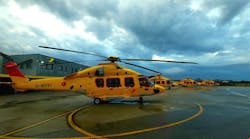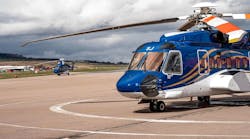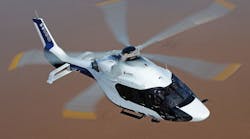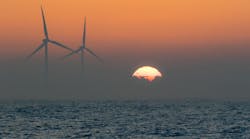Offshore staff
FRANCE — Airbus Helicopters and partners teamed up for a trial to demonstrate that helicopters can be an important asset to support floating wind farms.
Despite heavy winds and waves, the helicopters were stable as a team attempted to land technicians atop a floating wind turbine in the Hywind Tampen wind farm off the coast of Bergen, Norway.
A year prior in late 2022, Equinor agreed to hold the trials in Hywind Tampen, a floating wind farm already producing electricity to nearby platforms. The Airbus-led team foresaw data from real-world conditions: weather, air traffic, harsh sea states and the operational turbines’ behavior.
The logistics involved a special permit (Air Operator Certificates) from the Norwegian aviation authority, safety audits, risk assessments and standard operation procedures, in addition to extensive briefings for all crew members.
HTM and KN Helicopters, both providers of helicopter hoist services for the offshore wind industry, loaned their pilots for the test flights.
Airbus Helicopters, founded in 2014, said it aims to demonstrate a helicopter’s capability in connection to floating turbines. Even in the North Sea’s 5.5-m-high waves, conditions were challenging but feasible, the company said.
With wind farms moving farther from land, there is demand to install 250-m-high floating structures on supports moored to the seabed. Hywind Tampen is using 11 wind turbines 110 NM from shore to generate electricity to power its oil and gas platforms. The challenge was how to get a technician to the wind turbines far from land when waves and currents make it difficult for marine craft.
“The conditions were at the upper limit of what is possible, but we proved we could position the technicians on the turbine in a safe and efficient way,” said Bernd Brucherseifer, HTM managing director and pilot.
With 12 GoPro cameras on the helicopters, an H135 from KN Helicopters hoisted a cargo load onto a nacelle atop turbine No 2. Next, an H145 from HTM hoisted two passengers onto the nacelle of turbine No 2.
KN Helicopters said this helped demonstrate that there is a possibility to hoist from floating turbines even in high sea states.
A helicopter can transfer personnel in higher seas than marine vessels and in less time, the partners said. It adds up to less downtime for the turbines and more active use of technicians’ time, they added.
Footage from the cameras, plus motion data from the turbines, are now being analyzed and will be shared with the industry to mature standard operating procedures for hoisting to floating turbines.
11.21.2023










